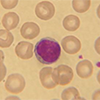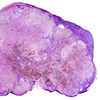Suitable Specimen Types
SerumProstate Specific Antigen (PSA)
Specimen Volume
2mL bloodSample Preparation
Turnaround Time
24 hoursSample Processing In Laboratory
UsualSample Stability
24 hours at 2-8 ºC
General Information
As a tumour marker for prostatic cancer, PSA demonstrates high tissue specificity and serum concentrations correlate well with tumour mass and clinical stage. However, elevated concentrations can not be considered diagnostic of prostatic cancer, as PSA can be elevated in 15% of patients with benign prostatic hypertrophy.
PSA is an accurate marker of response to treatment and for early detection of recurrent disease. PSA has a serum half life of about 3 days and should fall rapidly to normal or undetectable concentrations after successful radical prostatectomy.
The expression of PSA requires the presence of testosterone or dihydrotestosterone, and therefore, PSA concentrations may be unreliable in patients receiving hormone manipulation therapy.
Patient Preparation
None
Notes
Pathology Harmony have recently issued guidance on appropriate tumour marker requesting. For information please click on the following link:
http://www.pathologyharmony.co.uk/harmony-bookmark-v7.pdf
Reference Range
Reference ranges for PSA for adult males are those obtained by Oesterling (1993) and have been agreed with Consultant Urologists.
The age related ranges are as follows:
|
Age (years) |
Reference Range (ug/L) |
|
≤49 |
<2.8 |
|
50 – 59 |
<3.5 |
|
60 – 69 |
<4.5 |
|
70 – 79 |
<6.5 |
|
≥80 |
Based on clinical suspicion |
Source of Reference Range
Oesterling, J.E., Jacobsen, S. J., Chute, C. G. et al. (1993). Serum prostate-specific antigen in a community-based population of healthy men. Establishment of age-specific reference ranges. JAMA. 270 (7), 860-4.Specifications
-
EQA Status:
NEQAS
- EQAS Scheme: Yes







